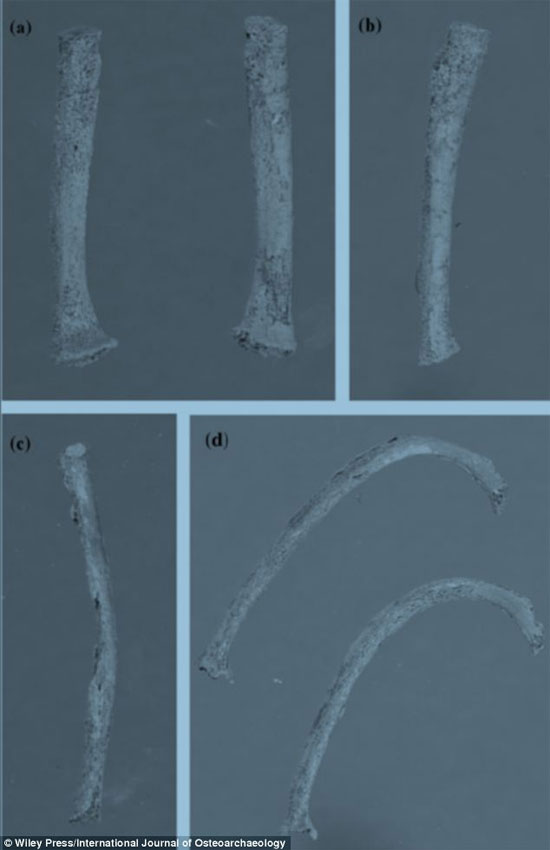The noble house also has rickets
Scientists were surprised to find children of a wealthy and powerful aristocratic family in Italy in the 17th century also suffered from malnutrition and rickets.
The rickety condition is often associated with malnutrition and poverty, but the bone analysis results of nine children from the Medicis family - one of the most powerful families of the Renaissance, ruled the Florence region ever since. the 15th and 18th centuries and the patron of the famous multi-talented artists Leonardo da Vinci and Michelangelo, revealing that they are also victims of this disease.
Researchers from both Pisa and Siena universities had the startling discovery after analyzing the bone samples collected on the floor of a crypt in Florence. According to the archaeological team, the grave of Giangastone, the last Grand Duke of the Medicis family (1671–1737), was chosen for the study because it was still intact despite previous research efforts. from before the Second World War.

The bones of children collected at a tomb of the Medicis noble family show the characteristic signs of rickets.(Photo: Daily Mail)
A secret entrance to the crypt was discovered when a marble plate was removed from the chapel floor, revealing the stairway to the hidden crypt.
In the crypt, the team saw a large stone casket containing the remains of the Grand Duke. There were many small coffins on the floor and loose pieces of bone were thought to have moved when the Arno River flooded in 1966.
The bones of children in the tomb are determined to belong to children from birth to age 5. They show characteristic signs of rickets, including bowlegs and flexed arms.
The research team said that the over-protection and over-protection of adults may have caused the children of the Medicis family to have rickets due to a lack of vitamin D.
The Medicis family, like many other wealthy aristocratic families in the 17th century, often keeps young children in the house for a long time, a habit that prevents them from absorbing enough vitamin D from sunlight. Previous studies also found that they breastfed until 2 years of age to start weaning and supplemented with viscous foods made from bread and apples or cereals.
The study authors concluded: "Our work clearly shows that even in the upper classes of society, children are at risk of rickets as a result of breast-feeding. long and inadequate exposure to sunlight . Two hours / week is the minimum necessary sunbathing time for babies if the mother shows her face exposed to sunlight but the family members Medicis family did not guarantee that ".
Children should have enough vitamin D from their mothers at birth, but the research team suspects that mothers in the Medicis family also suffer from vitamin D deficiency because they are kept in too many homes or too thick to avoid being sunny.
"The pale ivory skin was once considered an expression of health and elegance, distinguishing noble women from farmers all day in the field. White skin is so desirable that old women used to avoid it. exposure to sunshine and the use of white chalk to obtain it, " cited the study report in the International Journal of Osteoarchaeology.
Women in the Medici family are also more likely to suffer from vitamin D deficiency due to continuous delivery.
- Strange to breed noble chick with tail up to 7m long
- The mystery of a woman's hair is still black even though she died 3,000 years
- We will no longer have to fear floods when we live in a house like this
- The house was hidden, as it appeared in a fictional film that was in real life
- Discovered a noble woman's tomb 4.500 years ago
- Bamboo house living with natural disasters in Vietnam
- How strict is the White House protected?
- Secret 'heavenly' about the mummy's body 2 ancient noble brothers
- Bamboo house for homeless people
- Strange houses in the world
- Discovered a 600-year-old house underground
- 10 super beautiful tree houses in the world
 Discovered an ancient centipede fossil 99 million years old
Discovered an ancient centipede fossil 99 million years old Discovered bat-like dinosaurs in China
Discovered bat-like dinosaurs in China Discovered a 200-year-old bronze cannon of the coast
Discovered a 200-year-old bronze cannon of the coast Discover 305 million-year-old spider fossils
Discover 305 million-year-old spider fossils